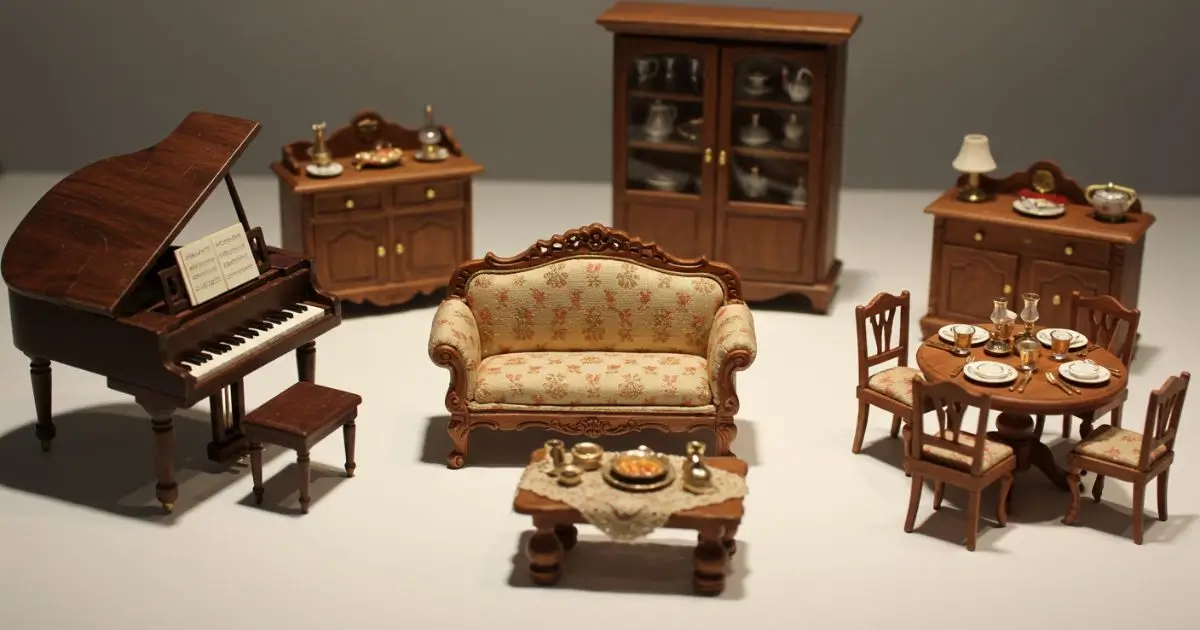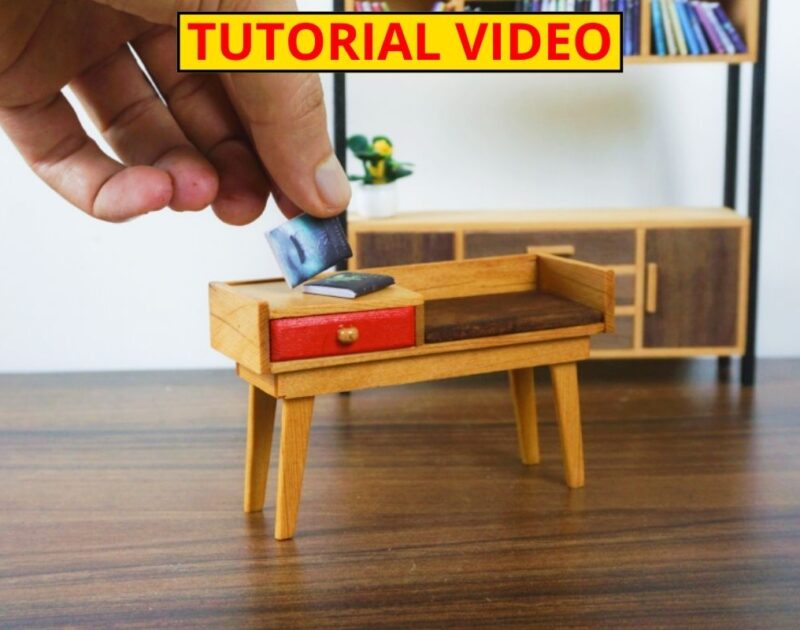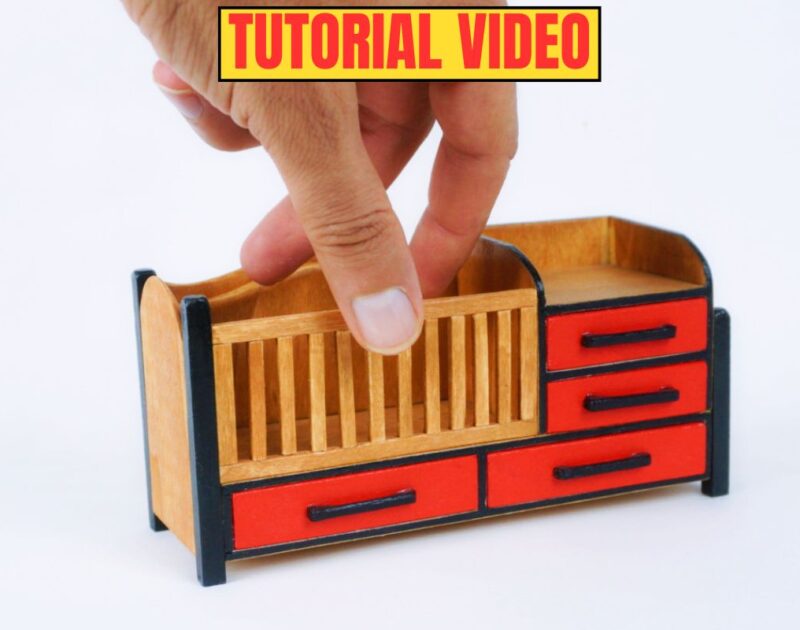Table of Contents
Creating the perfect miniature world requires attention to every tiny detail, and nothing impacts the authenticity of your dollhouse more than properly scaled dollhouse furniture. As someone who has spent over 5 years crafting miniature furniture pieces, I’ve witnessed countless collectors struggle with proportion issues that could have been easily avoided with the right knowledge.
The magic of dollhouse collecting lies in creating believable miniature spaces that transport you to another world. However, one mismatched piece of dollhouse furniture can shatter that illusion entirely. Whether you’re furnishing your first dollhouse or expanding an existing collection, understanding scale is the foundation of creating stunning miniature environments.
Who Is This Article For?
This comprehensive guide is designed for dollhouse enthusiasts who want to create authentic, proportionally correct miniature rooms. You’ll benefit most from this article if you’re:
- New to dollhouse collecting and want to avoid common scaling mistakes
- Experienced collectors looking to refine your furniture selection process
- Parents purchasing dollhouse and furniture set combinations for children
- Miniature enthusiasts who value historical accuracy and craftsmanship
- Anyone planning to invest in high-quality dollhouse furniture pieces
This article may not be suitable for casual toy buyers seeking basic play items without concern for scale accuracy, or those working with non-standard dollhouse sizes that don’t follow traditional scaling conventions.
Dollhouse Furniture Scale Overview
| Scale Type | Ratio | Best For | Furniture Height Range |
|---|---|---|---|
| 1:12 Scale | 1 inch = 1 foot | Adult collectors, detailed displays | 6-8 inches for tall pieces |
| 1:24 Scale | 1/2 inch = 1 foot | Compact spaces, beginners | 3-4 inches for tall pieces |
| 1:48 Scale | 1/4 inch = 1 foot | Quarter scale enthusiasts | 1.5-2 inches for tall pieces |
| 1:144 Scale | 1/12 inch = 1 foot | Micro miniatures | Under 1 inch |
Understanding Scale: The Foundation of Authentic Dollhouse Furniture
Scale represents the proportional relationship between your miniature furniture and real-world items. The most popular dollhouse furniture scale is 1:12, meaning one inch in miniature equals one foot in real life. This scale provides the perfect balance between detail and manageability, allowing craftspeople to include intricate features while maintaining reasonable furniture dimensions.
When selecting a dollhouse and furniture set, consistency is crucial. Mixing scales creates jarring visual inconsistencies that immediately break the miniature illusion. A 1:12 scale dining table paired with 1:24 scale chairs creates an impossible scenario where the chairs appear designed for children while the table towers above them.
Professional dollhouse furniture makers spend considerable time ensuring every measurement aligns perfectly with the chosen scale. Door handles, drawer pulls, table legs, and cushion thickness all must maintain proper proportions to achieve authentic results.
User-Friendliness: Working with Scaled Dollhouse Furniture
High-quality dollhouse furniture should be intuitive to arrange and rearrange within your miniature spaces. Well-designed pieces feature stable bases that prevent tipping, smooth-operating drawers and doors, and logical proportions that make room planning straightforward.
The learning curve for scale selection is minimal once you understand the basic ratios. Most collectors quickly develop an eye for proper proportions, though beginners benefit from purchasing complete dollhouse and furniture set packages that guarantee scale consistency across all pieces.
Setup involves careful measurement and planning. Before purchasing individual furniture pieces, measure your dollhouse rooms and create floor plans using the appropriate scale. This prevents costly mistakes and ensures optimal furniture placement for both functionality and visual appeal.
Durability & Quality: Investment-Grade Dollhouse Furniture
Premium dollhouse furniture construction typically involves solid wood components, metal hardware, and hand-applied finishes that withstand decades of handling. Quality indicators include smooth joint construction, properly aligned doors and drawers, and finish consistency across all surfaces.
Materials matter significantly in miniature furniture construction. Solid hardwoods like cherry, maple, and walnut provide superior durability compared to composite materials, while brass hardware adds authentic weight and longevity. Hand-painted details and realistic upholstery fabrics elevate pieces from simple toys to collectible art.
Long-term reliability depends on proper storage and handling. Quality dollhouse furniture maintains its appearance and functionality for generations when protected from direct sunlight, extreme temperature fluctuations, and excessive handling by young children.
Pros & Cons of Scale-Accurate Dollhouse Furniture
Advantages:
• Creates authentic, believable miniature environments • Maintains consistent visual proportions throughout displays • Increases collectible value and long-term investment potential • Allows for accurate historical room recreations • Provides educational opportunities about architecture and design • Compatible with standard dollhouse dimensions and accessories
Disadvantages:
• Higher cost compared to generic toy furniture • Limited availability for unusual or custom scales • Requires careful measurement and planning before purchases • Fragile construction may not withstand rough play • Storage and transportation require extra care • Replacement parts can be difficult to source
Alternatives & Comparisons
While traditional handcrafted dollhouse furniture offers unmatched quality and detail, several alternatives serve different needs and budgets:
3D Printed Furniture Sets provide excellent scale accuracy at lower costs, though they lack the warmth and texture of handcrafted wood pieces. These work well for beginners establishing complete room layouts before investing in premium pieces.
Kit-Based Furniture offers a middle ground between cost and quality, allowing hobbyists to assemble and finish pieces themselves. This option provides satisfaction of personal involvement while maintaining proper scale proportions.
Mass-Produced Plastic Sets serve casual collectors and children’s play needs but rarely achieve the scale accuracy and craftsmanship of handmade alternatives. Choose these for temporary displays or situations where durability concerns outweigh authenticity requirements.
Consider handcrafted options when creating permanent displays, heirloom collections, or historically accurate room settings. Select alternatives for budget-conscious projects, children’s playhouses, or experimental room layouts before committing to expensive pieces.
Frequently Asked Questions
Q: How do I determine the correct scale for my existing dollhouse? A: Measure a standard door height in your dollhouse. In 1:12 scale, doors should be approximately 7 inches tall. In 1:24 scale, they’ll be around 3.5 inches tall. This provides a reliable reference point for furniture selection.
Q: Can I mix different furniture scales in the same room? A: Mixing scales destroys the realistic proportions that make dollhouses compelling. Stick to one consistent scale throughout each dollhouse for best results, though you can use different scales for separate dollhouse projects.
Q: What’s the most important piece to get right when starting a dollhouse and furniture set? A: Begin with major pieces like beds, sofas, or dining tables that define room function and scale relationships. These anchor pieces guide selections for smaller accessories and decorative items.
Q: How much should I expect to spend on quality dollhouse furniture? A: Handcrafted pieces range from $25-200+ per item depending on complexity and craftsmanship. Complete room sets from quality makers typically cost $300-800, while basic plastic alternatives start around $20-50 per room.
Q: Where can I find replacement parts for damaged dollhouse furniture? A: Contact the original manufacturer first, as many craftspeople offer repair services. Alternatively, miniature specialty shops, online forums, and dollhouse shows often connect collectors with restoration specialists.
Conclusion
Proper scale selection transforms dollhouse furniture from simple toys into captivating miniature worlds that inspire imagination and showcase craftsmanship. The investment in scale-accurate pieces pays dividends through enhanced visual authenticity, increased collectible value, and the deep satisfaction of creating believable miniature environments.
While quality dollhouse and furniture set options require higher initial investment than generic alternatives, the superior craftsmanship, attention to detail, and long-term durability justify the cost for serious collectors. Whether you’re furnishing your first dollhouse or expanding an established collection, prioritizing proper scale ensures every piece contributes to the overall magic of your miniature world.
Remember that dollhouse collecting is a journey of discovery and creativity. Start with key anchor pieces in your chosen scale, then gradually build rooms that reflect your personal style and interests. With patience and attention to proportion, you’ll create miniature spaces that captivate viewers and provide years of collecting enjoyment.




